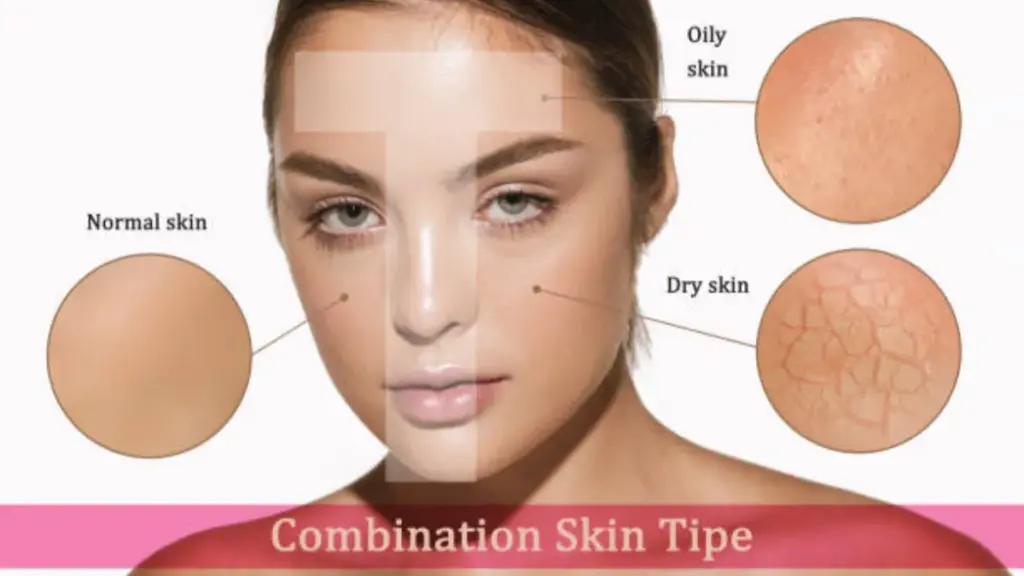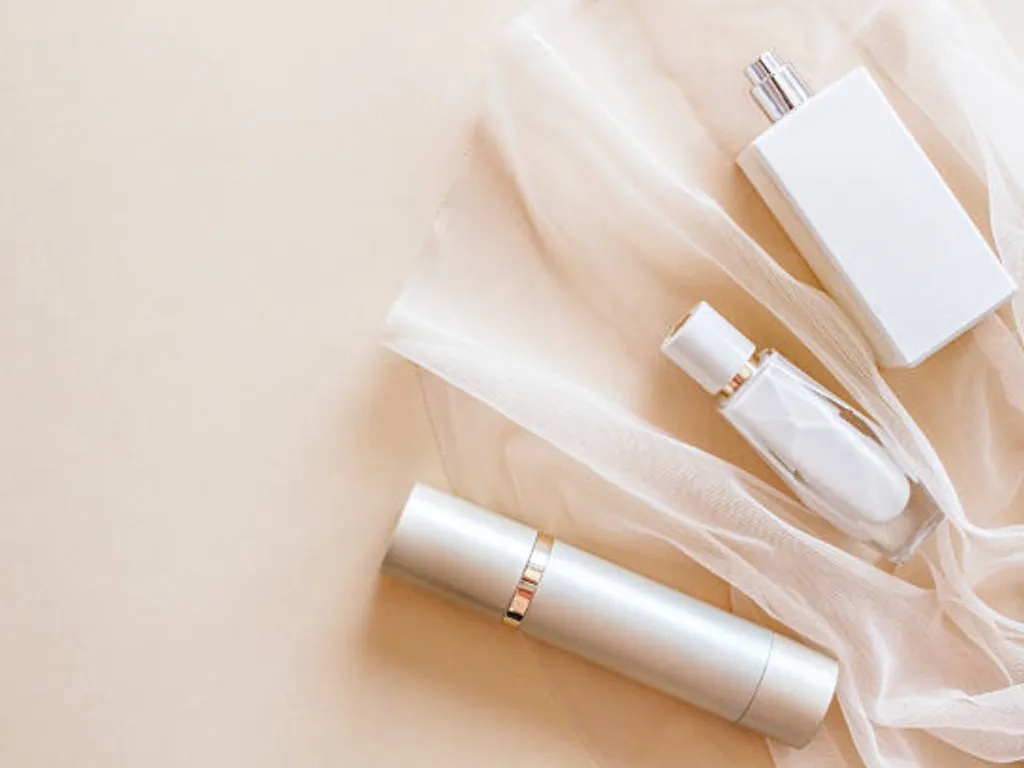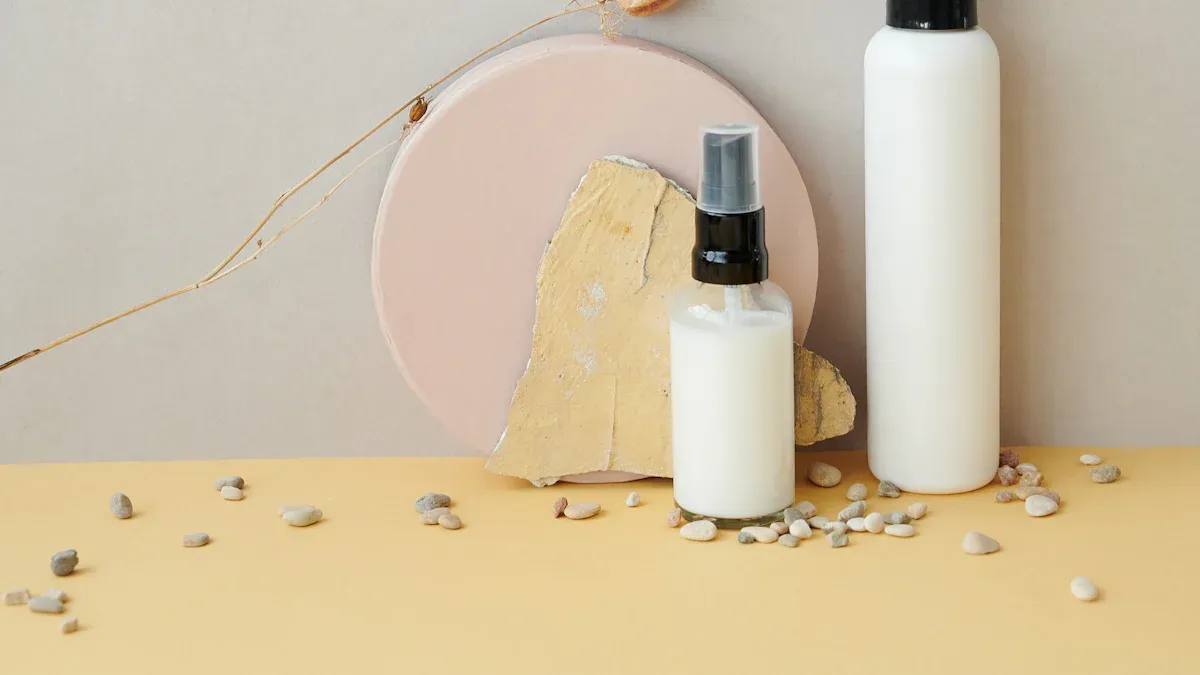
Creating a cosmetic product requires careful planning. A clear timeline ensures every step moves forward smoothly, from concept development to distribution. 그것없이, delays can disrupt your goals and waste resources. Collaborating with a cosmetic manufacturer strengthens this process.
You gain access to specialized expertise, helping your product stand out.
Rigorous testing ensures consistent quality and safety.
Navigating complex regulations becomes easier, protecting your brand’s reputation.
By prioritizing timelines and partnerships, you set the foundation for success in the competitive beauty industry.
Concept Development
Identifying the Target Market
Understanding your target market is the first step in concept development. It helps you create products that resonate with your audience. 에 의해 analyzing consumer behavior, you can uncover what motivates buyers and influences their decisions. 예를 들어:
Psychographics, such as lifestyle and personality traits, allow you to target specific groups. Eco-conscious millennials, 예를 들어, often prefer organic products.
Market trends, like the rise of vegan cosmetics and clean beauty, show the importance of aligning your product with consumer preferences.
When you define your target market, you position your brand to meet customer needs effectively. This clarity ensures your product stands out in a competitive industry.
Defining Product Goals
Clear product goals guide every stage of development. They help you focus on what matters most, from formulation to marketing. Recent trends highlight the importance of setting specific objectives:
경향 | 설명 |
|---|---|
Focuses on ingredient transparency, with brands like Ilia Beauty leading the charge. | |
포괄 성 | Sets new standards for diversity, as seen with Fenty Beauty’s wide range of shades. |
Technology Integration | Enhances shopping experiences through AR apps, like those used by Sephora. |
By aligning your goals with these trends, you increase your chances of a successful market entry.
Conducting Market Research
Market research ensures your concept aligns with consumer expectations. Surveys are a powerful tool for gathering insights into preferences and behaviors. They reveal how customers perceive your brand and what they expect from your products. Research also helps you refine advertising strategies, improving ROI by testing ideas before launching campaigns.
또한, studies in the cosmeceutical market show that innovative strategies enhance service quality. They also highlight how technical expertise influences customer satisfaction. By conducting thorough research, you gain a deeper understanding of your audience and refine your concept for success.
Selecting the Right Cosmetic Manufacturer
Choosing the right contract manufacturer is crucial for the success of your cosmetic product. A reliable manufacturer ensures your vision becomes reality while maintaining high standards of quality and compliance.
Evaluating Experience and Certifications
When evaluating a cosmetic manufacturer, focus on their experience and certifications. These factors demonstrate their ability to deliver safe and innovative products. Look for manufacturers with:
FDA 준수, which guarantees ingredient safety, proper labeling, and adverse event reporting.
Certifications from accredited laboratories, showcasing rigorous testing and adherence to safety standards.
A commitment to continuous quality improvement through regular audits, batch testing, and consumer feedback.
These credentials not only validate the manufacturer’s expertise but also enhance your brand’s reputation. 예를 들어, 울리, 신뢰할 수 있는 계약 제조업체, operates an FDA-, 이소의 뜻, and cGMP-certified facility, ensuring your products meet global standards.
Ensuring Quality and Compliance
Quality and compliance are non-negotiable in cosmetic manufacturing. Manufacturers must adhere to strict guidelines to protect your brand and consumers. Key metrics include:
Quality Metric | 설명 |
|---|---|
좋은 제조 관행 (GMP) | Framework ensuring facilities, processes, and personnel meet high standards to minimize risks. |
라벨링 요구 사항 | Compliance with regulations regarding ingredient disclosure and product information. |
Reporting Systems | Mechanisms for documenting and reporting product safety and compliance issues. |
또한, manufacturers must avoid prohibited ingredients and comply with specific ingredient restrictions. Adhering to these standards ensures your products are safe, consistent, and market-ready.
Building a Collaborative Partnership
A strong partnership with your cosmetic manufacturer can elevate your product development process. Collaboration fosters innovation and ensures your vision aligns with the manufacturer’s capabilities. Successful partnerships often involve:
Transparent communication to address challenges and refine strategies.
Shared values, such as sustainability or ethical practices, which resonate with your target audience.
Leveraging expertise, like partnering with influencers or industry professionals, to enhance product credibility.
예를 들어, brands like DermiGlow Skincare and Luxe Haircare have built effective partnerships by aligning their goals with their manufacturers’ strengths. These collaborations have resulted in increased sales, improved brand visibility, and stronger consumer trust.
By choosing the right contract manufacturer and nurturing a collaborative relationship, you set the stage for a successful product launch.
Product Development Process
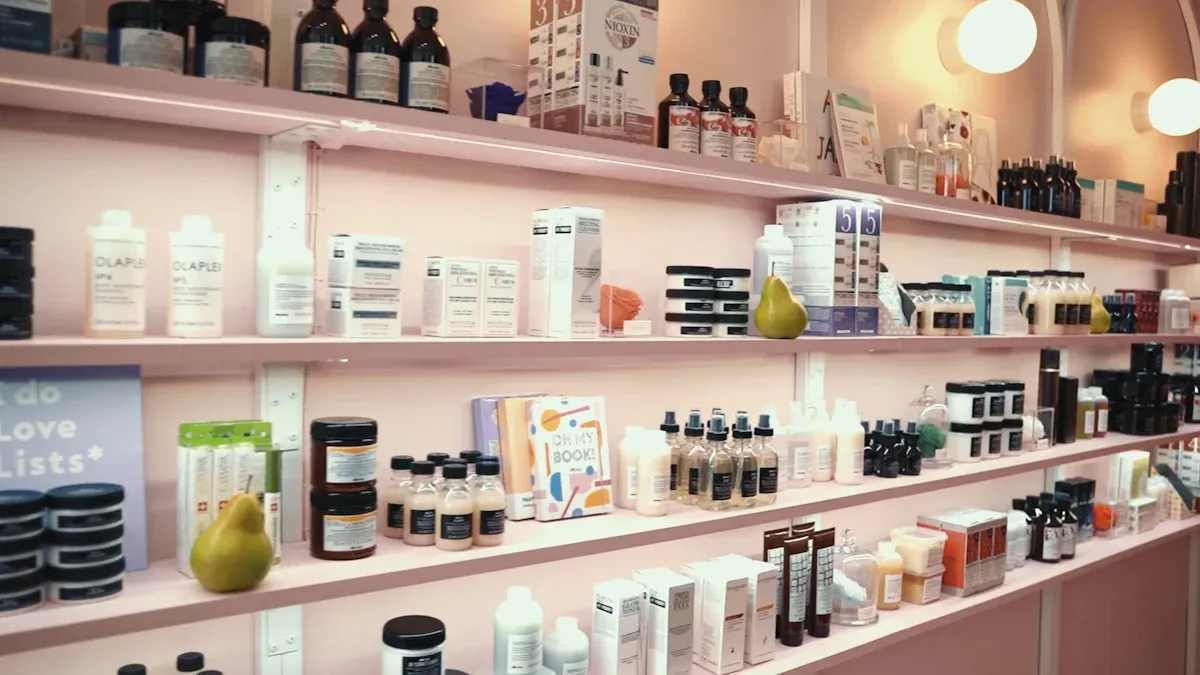
Formulation and Ingredient Selection
The formulation stage is where your product truly begins to take shape. This step involves selecting the right ingredients to achieve your desired results while ensuring safety and compliance. You need to balance innovation with practicality, as the ingredients you choose will define your product’s performance, texture, 그리고 항소.
A global cosmetics leader demonstrated the importance of this step by using advanced data analytics to streamline formulation. By implementing BIOVIA Pipeline Pilot, they reduced formulation time by 50% and improved ingredient selection through predictive modeling.
This approach highlights how careful ingredient selection can optimize product performance and regulatory compliance.
When choosing ingredients, consider factors like skin compatibility, 지속 가능성, and market trends. 예를 들어, plant-based and cruelty-free ingredients resonate with eco-conscious consumers. Collaborating with your manufacturer can also help you access cutting-edge formulations and ensure your product aligns with industry standards.
Testing and Prototyping
Testing and prototyping are essential for refining your product and ensuring it meets customer expectations. This process allows you to evaluate the effectiveness, 안전, and usability of your product before full-scale production.
User testing plays a critical role in this phase. By gathering feedback from real users, you can identify strengths and weaknesses in your prototype. This ensures your product aligns with market demands and user needs. 예를 들어:
Visual inspections help detect shape inaccuracies, surface finish issues, and cosmetic defects.
Stakeholder testing involves end users assessing ergonomics and usability, providing valuable insights for improvement.
또한, manufacturers often refine prototypes through steps like smoothing surface defects, adjusting thermal regulation, and incorporating vents to eliminate trapped gases. These refinements ensure your product is both functional and visually appealing.
Finalizing Specifications
Finalizing specifications is the last step before moving into production. At this stage, you define every detail of your product, from its formulation to its packaging. Clear and precise specifications ensure consistency and quality during manufacturing.
Work closely with your manufacturer to document all technical details, including ingredient percentages, production methods, and packaging requirements. This collaboration minimizes errors and ensures your product meets regulatory standards.
By finalizing specifications, you create a roadmap for the manufacturing process. This step also helps you maintain consistency across batches, which is crucial for building customer trust and loyalty.
Packaging and Labeling
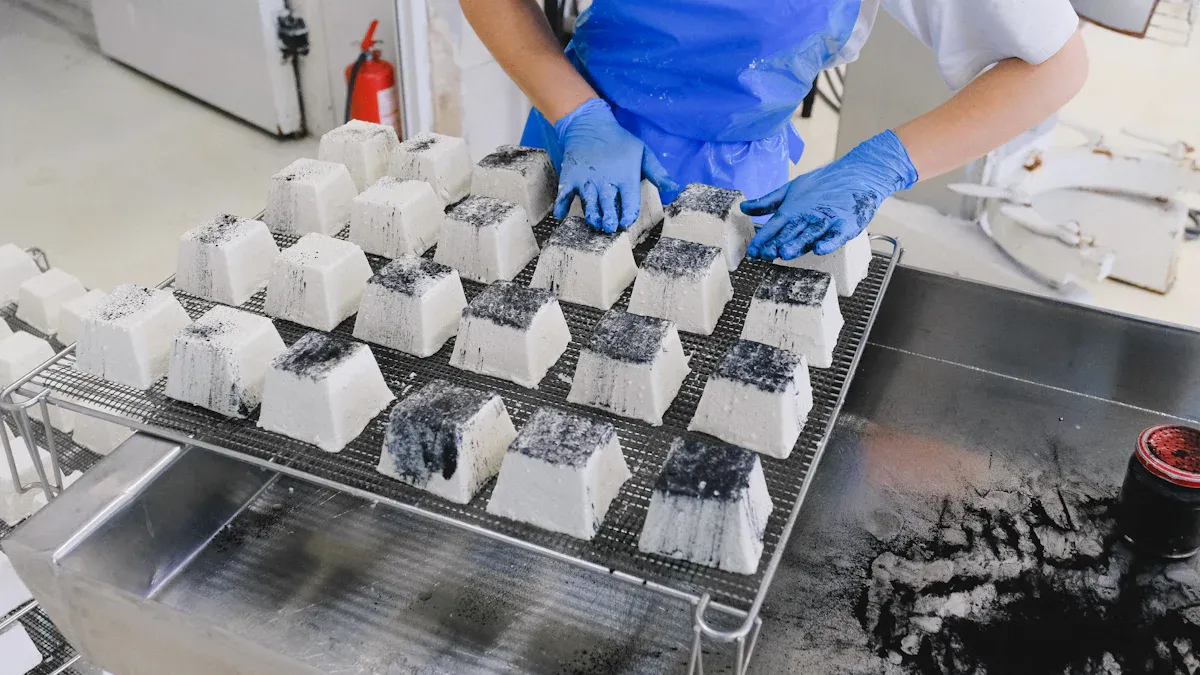
Designing for Branding and Functionality
Your product’s packaging plays a vital role in shaping how customers perceive your brand. A well-thought-out design not only attracts attention but also communicates your brand’s values and functionality.
Impact on Brand Perception | |
|---|---|
감정적 인 연결 | Fosters trust and preference for a brand |
Brand Recognition | Enhances visibility and recall |
Perceived Quality | Influences consumer judgment of product quality |
Brand Trust | Builds loyalty and repeat purchases |
Sustainable packaging solutions, 예를 들어, align with eco-conscious consumer demands, boosting brand loyalty. Minimalist designs convey sophistication and transparency, appealing to those seeking authenticity. Smart packaging, such as QR codes or augmented reality features, enhances user engagement by providing personalized experiences.
By focusing on both branding and functionality, you ensure your product stands out while meeting customer expectations.
Ensuring Regulatory Compliance
Regulatory compliance in packaging and labeling is essential to avoid legal issues and maintain consumer trust. Each region has specific requirements that you must follow.
Region | Regulatory Body/Act | Key Requirements |
|---|---|---|
미국 | FDA (Federal Food, Drug, and Cosmetic Act, Fair Packaging and Labeling Act) | Ensures product safety, proper labeling, and prevention of deceptive marketing claims. |
European Union | Cosmetic Regulation (EC) No 1223/2009 | Sets out requirements for product safety, 라벨링, and notification of cosmetic products. |
Other Regions | Various regulations in China, Japan, 대한민국, 호주 | Specific regulations for skincare products in each region. |
예를 들어, the FDA mandates accurate ingredient disclosure and prohibits misleading claims. In Europe, the EC 1223/2009 regulation requires comprehensive safety assessments. Collaborating with a manufacturer experienced in global compliance ensures your packaging meets these standards.
Choosing Packaging Vendors
Selecting the right packaging vendor impacts your product’s quality, cost, 그리고 항소. Reliable vendors maintain product integrity, optimize shelf life, and adhere to strict quality control measures.
설명 | |
|---|---|
Product Integrity | Evaluations ensure that packaging materials maintain product integrity without contamination. |
Shelf Life Optimization | Proper packaging can extend the shelf life of products, reducing waste and improving quality. |
품질 관리 | Emphasizes the importance of quality control in selecting reliable vendors for packaging. |
Consider the design and materials used in packaging to balance functionality and cost. Sustainable materials, 예를 들어, reduce environmental impact while appealing to eco-conscious consumers. Collaborating with vendors who prioritize innovation and quality ensures your product remains competitive in the market.
Manufacturing and Quality Control
Production Processes and Timelines
Efficient production processes are the backbone of cosmetic manufacturing. You need to plan each step carefully to meet deadlines and maintain product quality. Priority-based batch production planning helps organize manufacturing based on demand, ensuring timely delivery. Tracking raw materials, work-in-progress (WIP), and finished products prevents shortages and delays.
Practice/Tool | 설명 |
|---|---|
Priority-based batch production planning | Helps in organizing production based on demand. |
Raw material handling, WIP, and finished products inventory tracking | Ensures materials are available and managed efficiently. |
Features for tracking individual items and batches | Allows for precise monitoring of production quality. |
Tools for tracking expiry dates of items | Prevents the use of expired materials, ensuring quality. |
By implementing these practices, you can streamline production timelines and reduce costs. Collaborating with your manufacturer ensures that every stage aligns with your goals, from sourcing materials to delivering finished products.
Ensuring Consistency and Quality Assurance
Consistency is key to building trust in your cosmetic brand. Quality assurance processes validate that every product meets the same high standards. Manufacturers conduct batch testing, stability testing, and microbial analysis to ensure safety and efficacy.
Rigorous testing of raw materials prevents harmful components in formulations.
Stability testing verifies that products maintain their desired characteristics throughout their shelf life.
Microbial testing ensures products are free from contamination before market release.
메트릭 | 설명 |
|---|---|
Examines productivity, reliability, and consistency in production, measured by cycle time, yield, throughput, waste, downtime, and error rate. | |
Raw material testing | Analyzes properties of ingredients to verify identity, purity, 힘, 그리고 안전, detecting contaminants and allergens. |
Finished product testing | Assesses final products to ensure they meet specifications and consumer expectations through various physical, 화학적인, and performance tests. |
Accurate documentation throughout manufacturing ensures traceability and accountability. By prioritizing quality assurance, you protect your brand’s reputation and deliver products that customers trust.
Managing Production Challenges
Production challenges can disrupt timelines and increase costs. You can overcome these obstacles by adopting proactive strategies. Shortages of raw materials and packaging often arise, but diversifying suppliers and improving collaboration can mitigate these risks.
도전 | 해결책 |
|---|---|
Logistics Issues | Implement inventory management systems and collaborate with logistics partners. |
Sustainability Demands | Source local ingredients and utilize eco-friendly packaging. |
Innovation Challenges | Conduct stability testing and implement quality assurance protocols. |
Brand Resilience | Engage with consumers and address quality issues promptly. |
Demand volatility requires advanced analytics and close collaboration with retailers. Regulatory compliance and safety standards are tightening, so investing in advanced testing technologies is essential. By anticipating market trends and streamlining processes, you can adapt to challenges and maintain production efficiency.
Distribution and Marketing Strategies
Developing Marketing Plans
A well-crafted marketing plan ensures your cosmetic product reaches the right audience. Start by identifying your target demographic and understanding their preferences. Use key performance indicators (KPIs) to measure the success of your strategies.
KPI | 설명 | Importance |
|---|---|---|
Average Order Value (AOV) | Measures average revenue per transaction. | Indicates effective pricing strategies or successful bundling offers. |
Customer Retention Rate | Highlights ability to retain customers over time. | 고객을 유지하는 것은 새로운 고객을 확보하는 것보다 비용 효율적입니다. |
Social Media Engagement Rate | Tracks likes, 주식, 의견, and clicks across platforms. | High engagement reflects strong brand resonance and effective content strategies. |
Successful campaigns often combine creativity with data-driven insights. 예를 들어:
Dove’s campaigns promote self-confidence and body positivity.
Olay’s #FaceAnything campaign celebrates individuality and uses influencers to connect with audiences.
Sephora’s Beauty Insider Program rewards loyalty and builds a community.
By focusing on these strategies, you can create a marketing plan that resonates with your audience and maximizes your budget.
Selecting Distribution Channels
Choosing the right distribution channels ensures your product reaches customers efficiently. Evaluate each channel based on its reach, cost, 그리고 고객 선호도.
설명 | |
|---|---|
Sales Data | Sales data segmented by distribution channel (예를 들어, 소매, e-commerce). |
Geographic Reach | Geographic reach and coverage data for each channel. |
Customer Acquisition | Customer acquisition and retention data by channel. |
E-commerce platforms offer global reach and convenience, while retail stores provide a tactile shopping experience. Social media marketplaces, like Instagram Shops, combine both. Analyze customer behavior to determine which channels align with your goals. 예를 들어, younger audiences may prefer online shopping, while older demographics might favor in-store purchases.
Collaborating with your manufacturer can also streamline distribution. Their expertise ensures your product is available on time and in the right locations.
Speeding Up Time to Market
Reducing the time it takes to launch your product gives you a competitive edge. Streamline your processes by working closely with your manufacturer. Their experience in production and logistics can help you avoid delays.
Diversify your supply chain to prevent bottlenecks. Use advanced analytics to predict demand and adjust inventory levels. 예를 들어, tracking inventory turnover ensures products are always available without overstocking.
Marketing also plays a role in speeding up time to market. Pre-launch campaigns build anticipation and create demand. Social media platforms allow you to engage directly with your audience, gathering feedback and refining your approach.
By optimizing your distribution and marketing strategies, you can bring your product to market faster while staying within your budget.
Mastering the timeline of cosmetic product development requires a structured approach. Each stage, from concept development to distribution, plays a critical role in ensuring success. Define your goals early, create a detailed plan, and track progress to stay on course. Collaborate closely with your manufacturer to streamline processes and maintain quality. Regularly monitor KPIs to adjust strategies as needed. By focusing on planning, communication, and attention to detail, you can bring your cosmetic product to market efficiently and confidently.
팁: Use a project management tool to organize tasks and timelines for better oversight.
FAQ
What is a production prototype, 그리고 왜 중요한가??
A production prototype is a sample version of your product created during the prototype manufacturing process. It helps you test the design, functionality, and quality before full-scale production. This step ensures your product meets customer expectations and regulatory standards.
How long does the prototype manufacturing process take?
The prototype manufacturing process typically takes 2-4 주, depending on the complexity of your product. Collaborating closely with your manufacturer can help streamline this timeline and address any design or formulation adjustments efficiently.
Can you make changes to a prototype after testing?
예, you can refine your prototype based on testing feedback. Adjustments to the design, 공식화, or packaging ensure the final product aligns with your vision and market demands. This iterative process helps you create a product that resonates with your target audience.
How do manufacturers ensure the quality of a production prototype?
Manufacturers use rigorous testing methods, including stability and performance tests, to ensure the quality of a production prototype. These tests validate the product’s safety, 일관성, and effectiveness, giving you confidence in its readiness for mass production.
What role does a prototype play in the overall product development process?
A prototype bridges the gap between concept and production. It allows you to evaluate your product’s feasibility, identify potential issues, and refine details. This step is crucial for ensuring a smooth transition to full-scale manufacturing and delivering a high-quality product to market.

